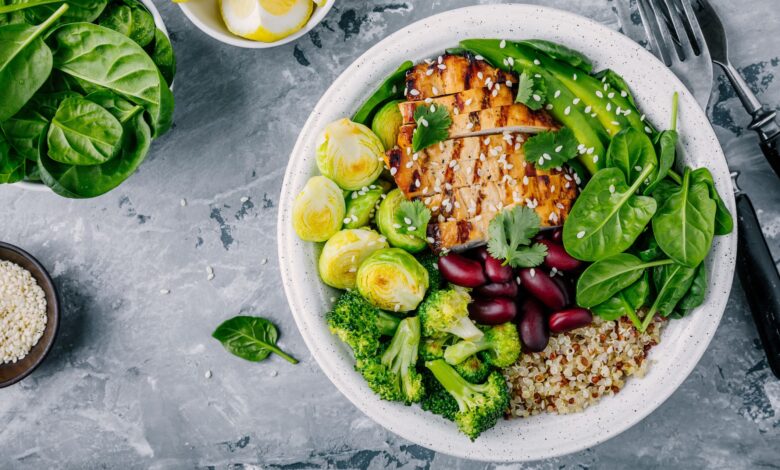Candida Diet: A Comprehensive Guide to Support Your Health

In recent years, experts have introduced the Candida diet as a solution for those suffering from Candida overgrowth. Candida is a form of yeast that is always present in the human body in the form of flora mostly in the gut.
However excessive amounts of Candida can cause problems of different types: gastrointestinal, skin, and other. This article aims to explain what the Candida diet is, outline its benefits, and show how to incorporate it into daily life.
Understanding Candida Overgrowth
When the balance of good bacteria in the gut is disrupted, Candida yeast increases in number and causes diseases. There are many causes of this imbalance some of which include refined sugars and carbohydrate consumption, repeated use of antibiotics, hormonal changes, a compromised immune system, and chronic stress.
Some general signs that may indicate Candida overgrowth include frequent yeast infections. People might experience digestive problems like bloating and gas. They may also have digestive upsets such as diarrhea. Chronic tiredness, fuzzy thinking, aching joints, and hives are other possible symptoms. If you are in doubt about the Candida overgrowth, you must see your doctor for a proper diagnosis.
The Candida Diet: What is it?
The Candida diet focuses on starving Candida yeast by eliminating foods that feed it, particularly sugars and refined carbohydrates. It aims to address health issues caused by an unhealthy gut balance. It also promotes the overall health of the gastrointestinal tract. The Candida diet is not a cure for every disease. However, it can help those adjusting to a new lifestyle that combats Candida overgrowth.
Foods to Include in a Candida Diet
Non-Starchy Vegetables: Ensure you take many forms of vegetables that are low in starch into your Candida diet. You should take more green leaves, broccoli, Brussels, sprouts, cauliflower, and asparagus among others due to their low-calorie content. These vegetables are packed with nutrients, contain very little sugar, and are good for gut health.
Lean Proteins: Use foods like white meat, fish, eggs, tofu, beans, and other low-fat protein foods in your Candida diet. Protein is needed for the body to repair tissues, fight infection, and maintain consistent blood sugars.
Healthy Fats: Instead of foods high in hydrogenated oils choose foods that are rich in unsaturated fatty acids such as avocados, olive oil, coconut oil, nuts, and seeds. These fats supply the body with some life-essential fatty acids, not to mention they help control the inflammation in the body.
Fermented Foods: Probiotics are found in foods such as sauerkraut, kimchi, kefir, and yogurt without adding sugar. They come with a probiotic value to help replenish the friendly bacteria flora in the digestive system.
Foods to Avoid on a Candida Diet
- Sugar and Sweeteners: Avoid the consumption of any food product that contains refined sugars, artificial sweeteners, and high carbohydrate-containing fruits. Sugar is a favorite food for Candida yeast, and incorporating these foods into your diet worsens the Candida condition.
- Refined Carbohydrates: Do not consume foods high in refined carbohydrates like white bread, pasta, and any baked foods. First, such foods can within a very short time transform into sugars within the body and feed the candida fungus.
- Alcohol: Alcoholic drinks affect gut bacteria and set up a condition that hampers the immune system from fighting Candida buildup. Unfortunately, you must also avoid alcohol consumption on the Candida diet, although moderate drinking will not worsen the situation.
- Processed Foods: Most manufactured foods have additives, preservatives, and excessive refined sugars that can lead to candidiasis. Instead, opt for them in their whole form, as close to their natural state as can be.
Incorporating the Candida Diet into Your Lifestyle
- Meal Planning: It is important to avoid surprising your body by feeding it foods that will create an environment that can nourish Candida at some points while depriving it at others. Make a weekly meal schedule that will allow you to eat vegetables, proteins, and healthy fats during the week.
- Educate Yourself: Find out what the Candida diet is and how it works. Know which foods to include and which to avoid. This knowledge will help you make the right decisions, especially when sticking to the required diet during the preparation process.
- Stock Your Pantry: Remove all products restricted by the Candida diet from your kitchen for at least a week. In their place recommend better options like whole grain flours, non-starchy flours like almond or coconut flour, and natural sweeteners like stevia or monk fruit.
- Gradual Transition: Some of these foods may however be difficult to eliminate from your diet all at once. It could also be easier to reduce the amount of sugars and refined carbohydrates in the foods you’re eating more gradually. Try substituting them with healthier aspects of a food item; for instance, use stevia instead of sugar or quinoa in place of white rice.
- Seek Support: You should attract friends and relatives who will support your choice and get involved in the plan you create. Also, get into the online groups or forums that will help you find other people who would also be following the Candida diet.
Conclusion
A strict microbiome diet such as a Candida diet can be of great use when it comes to controlling Candida overgrowth and improving health conditions. By avoiding the yeast growing foods and including gut-friendly foods, it becomes easier to develop a healthy body environment for the bacteria to grow.
You will need to understand that the Candida diet is just one component of the Candida overgrowth concept. You should undergo treatment under the supervision of a licensed healthcare professional, as each person has a unique condition. With discipline and commitment, you can take responsibility for the health you want to achieve.




